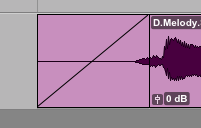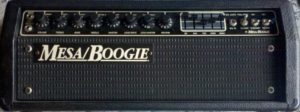So I have previously posted pros and cons on using acoustic drums and on using sampled drums… now it’s time to mix it up. Using a mix of both acoustic drums and triggered (sampled) drums is one of my favorite ways to produce drum tracks. Here are a couple things to consider…
One of the most common complaints about using triggered drums is the cymbal sound. If you don’t play drums, then you may not understand… but there is a lot of feel that goes into a good drummers cymbal work. Cymbals are really more of an art form than most other percussive instruments. That is why I typically like to record acoustic… “real” cymbals along with triggered drums. It is almost impossible to recreate the nuances of a hihat or ride cymbal. Sample libraries sound great, they really do… but cymbals are best served with the full artistic expression of the musician.
On the other hand; Most of the time the drums (kick, snare, toms) are far less expressive. This will really be determined by the player, music, and genre. However, for the most part these drums are typically squashed with compression to give the track consistent dynamics. This makes these kinds of drums great for triggering. Triggering your drum tracks will give you the control over consistency that is typically desired. Additionally, you can utilize a great selection of drum libraries for your drum tones.
There are, however, a couple things to keep in mind while mixing your acoustic and triggered drums. One thing to consider is the drum room you are tracking in. If you are using microphones for your cymbals then you will need to consider the room you are tracking in. Room sound and having the appropriate space is paramount in getting great cymbal recordings. If this is the route you are considering; then you will need to have some great microphones, in phase, with preamps and converters, in a room that sounds great… that may be a tall order to fill.
Additionally, consider how you plan on capturing the triggered drum sounds. Most drummers are not too excited about how bouncy mess pads are, and hard drum pads will bleed into your overhead mics. Although this presents a bit of a problem… it can be easier to overcome these issues than properly setting up microphones, purchasing preamps and converters, checking phase, getting drum tone, and all the other hassle that goes along with recording acoustic drums.
In the end, mixing acoustic drums and triggered drums has always been my favorite way to produce drum tracks. All the issues brought up in this post can be hashed out with a conversation with your musicians before they get to the session. The most important thing is to make sure you musician is comfortable enough to give you a great performance. Even the best engineering can’t make up for an uncomfortable performance from a struggling musician.

 First, and possibly the most important, is making sure that all punch in and punch out points have fades. I always took for granted that audio tracks would be properly faded in and out when I started off. That is because I was always the one working on the tracks. However, not that I am receiving tracks online from clients… I’m realizing that some basic production necessities sometimes go overlooked. Fading in and out audio tracks at the beginning and end of their region is an absolute necessity, and here is why. When you have an audio signal that is cut (either at the beginning or end of a region) you are creating a spot where there is an audio “pop”. The only way to avoid this is to make sure the cut is at the absolute zero amplitude mark… just about impossible. I say this is just about impossible, because most DAWs don’t allow the precision for this to happen. Soooo… the way to avoid this kind of noise is to make a fade. The fade can be a short 2 millisecond edit fade or a long drawn out musical fade… either way there needs to be a fade at the ends of every audio region. Even if you don’t hear a pop right away… that doesn’t mean one won’t sneak in later during mixdown or export… and once they are there, there is no turning back.
First, and possibly the most important, is making sure that all punch in and punch out points have fades. I always took for granted that audio tracks would be properly faded in and out when I started off. That is because I was always the one working on the tracks. However, not that I am receiving tracks online from clients… I’m realizing that some basic production necessities sometimes go overlooked. Fading in and out audio tracks at the beginning and end of their region is an absolute necessity, and here is why. When you have an audio signal that is cut (either at the beginning or end of a region) you are creating a spot where there is an audio “pop”. The only way to avoid this is to make sure the cut is at the absolute zero amplitude mark… just about impossible. I say this is just about impossible, because most DAWs don’t allow the precision for this to happen. Soooo… the way to avoid this kind of noise is to make a fade. The fade can be a short 2 millisecond edit fade or a long drawn out musical fade… either way there needs to be a fade at the ends of every audio region. Even if you don’t hear a pop right away… that doesn’t mean one won’t sneak in later during mixdown or export… and once they are there, there is no turning back.  The first amp I’m going to take a quick look at is my ‘65 Fender Twin Reverb amp. The Fender Twin is known for being an extremely clean amp with lots of headroom. I have always found these amps to sound incredibly warm and have a really great low end. Because of this, I often find myself pulling out the Fender Twin as a rhythm guitar track. I paired the Fender Twin Reverb with my 1966 Rickenbacker 370-12 on all the tracks for
The first amp I’m going to take a quick look at is my ‘65 Fender Twin Reverb amp. The Fender Twin is known for being an extremely clean amp with lots of headroom. I have always found these amps to sound incredibly warm and have a really great low end. Because of this, I often find myself pulling out the Fender Twin as a rhythm guitar track. I paired the Fender Twin Reverb with my 1966 Rickenbacker 370-12 on all the tracks for  The next amp I’ll take a look at is the Mesa/Boogie Mark III. First let me say, I’m really a Mesa/Boogie fan… Just about all of their amps are A-Ok in my book;) The Mark III happens to be a very versatile amp. The sounds you can get out of it are extremely clean, to a little dirty, to a great lead or metal tone. I recently paired the Mesa/Boogie Mark III with my 1959 Fender Stratocaster to make stereo rhythm guitar tracks for
The next amp I’ll take a look at is the Mesa/Boogie Mark III. First let me say, I’m really a Mesa/Boogie fan… Just about all of their amps are A-Ok in my book;) The Mark III happens to be a very versatile amp. The sounds you can get out of it are extremely clean, to a little dirty, to a great lead or metal tone. I recently paired the Mesa/Boogie Mark III with my 1959 Fender Stratocaster to make stereo rhythm guitar tracks for  Finally, for this post, I’ll look at the Ampeg SVT-4 Pro that I used on the bass tracks for “Forged in Fire” by
Finally, for this post, I’ll look at the Ampeg SVT-4 Pro that I used on the bass tracks for “Forged in Fire” by